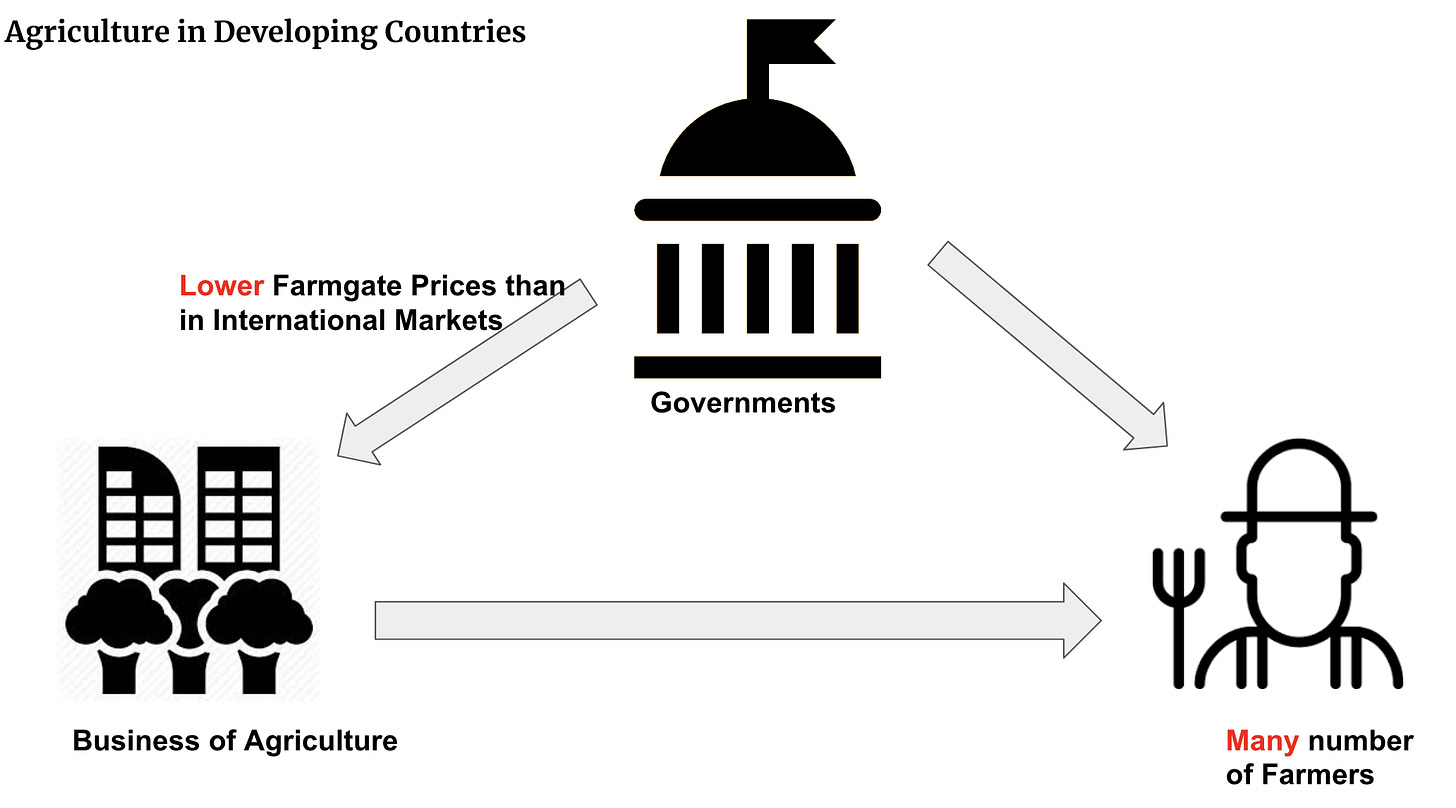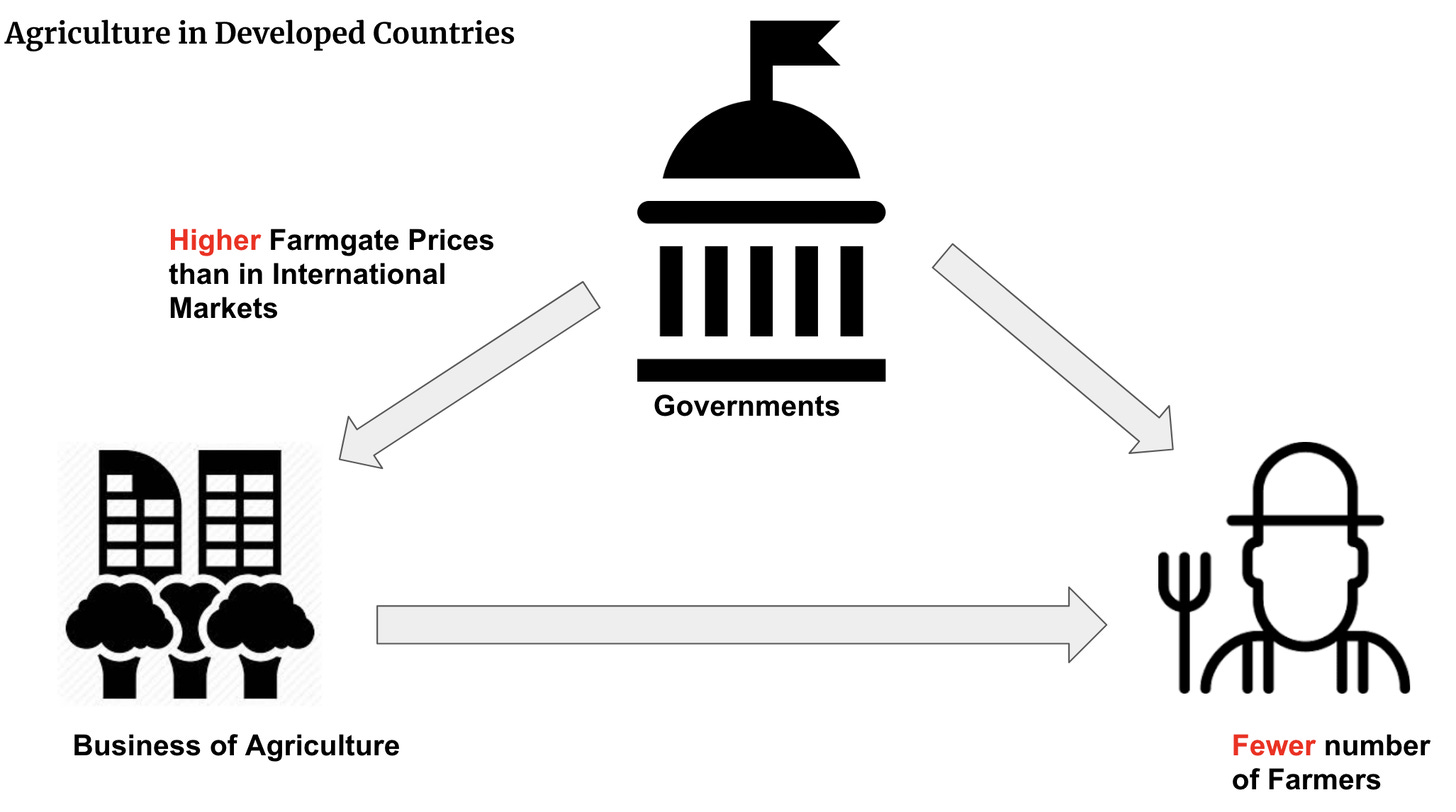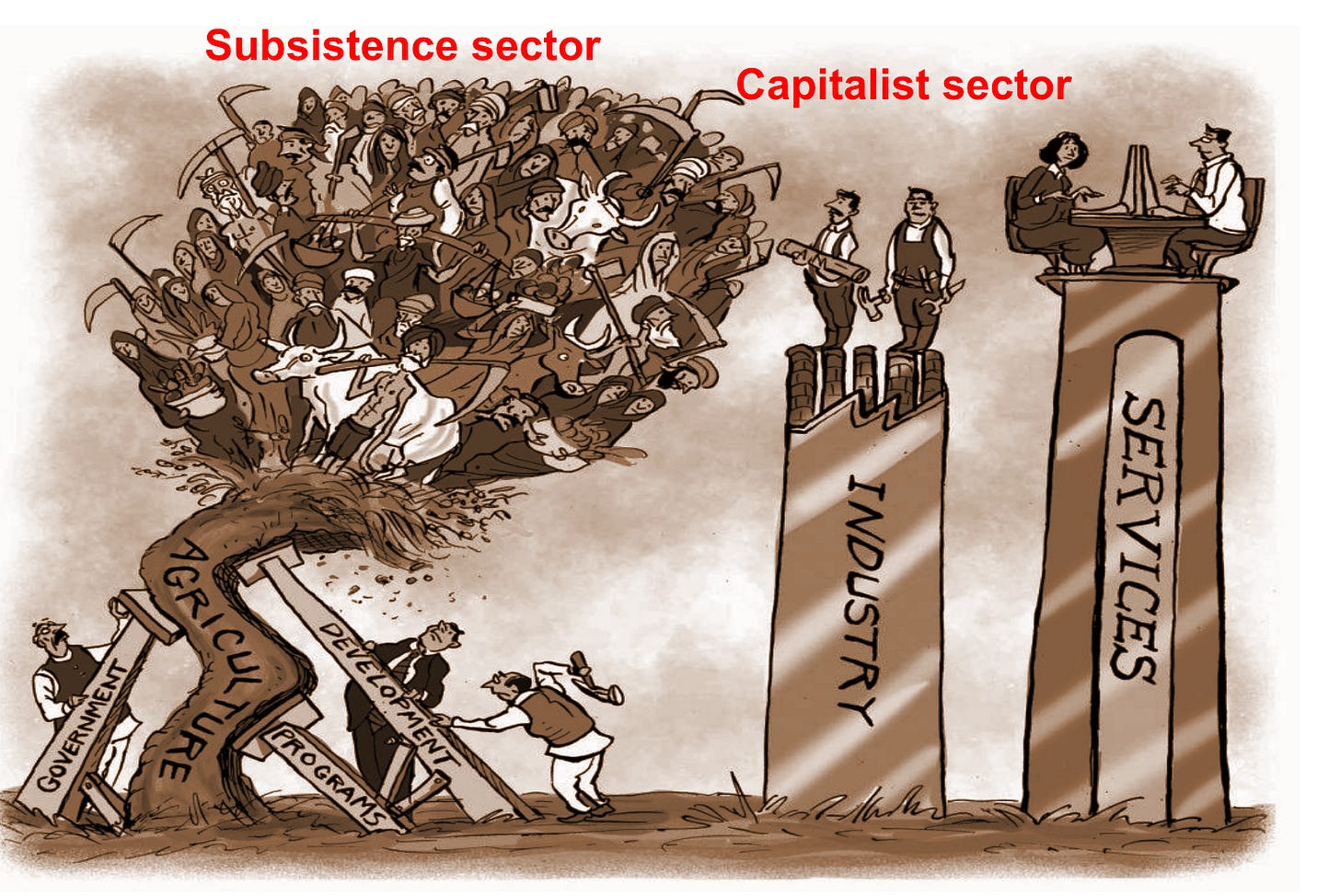Rethinking Defaults and Gameplays of Agribusiness
Is Software Ready to Feed (yes,I am talking about Feed and not Eat) the World?
Dear Friends,
Good afternoon. Venky here from Agribusiness Matters. Welcome to the Sunday digest edition, where I reflect and ruminate over the previous week’s newsletter.
Although blogging is a rewarding process of sense-making in its own right, unalloyed fun begins mostly after you’ve hit the publish button. When comments, reactions and stories start gathering around the blog posts like termites creeping out of the woodworks, you discover newer perspectives that begin to make sense, only when you step back from your own and watch the collective action unfold.
Last week, I began a two-part exploration on rethinking the defaults of agribusiness.
The business of agriculture, if you've paid notice, happens differently in developed countries and developing countries. Even if you've had paid scant attention to agriculture, you would notice a strange anomaly.
How come more number of farmers in developing countries have smaller say in critical decisions about their livelihoods than a smaller number of farmers in developed countries?


Based on the works of Mancur Olson, I explored a design pattern which could explain this difference. Here is how I spelt out it: Exploitation of Agriculture is required for Development. Soon after I published the essay, I had received an interesting comment from a good friend of mine. Here is an edited excerpt.
“The default has to change to a pattern of silicon valley style of problem-solving for agriculture…The Internet became the great equalizer that gave voices to everyone and not just the powerful few. It spurred the creation of transformative businesses, which otherwise would not have been possible. Similarly, how can technology alter the agriculture business in such a fundamental way? We have to question everything, I mean everything. Let's start with the basic question, Do we really need land and water to grow our food? “
One of the biggest lessons I have learned from my mentor in agriculture is to pay greater attention to economics over technology. Given the rate of technological evolution, if you ask my contrarian viewpoint, technology stack, relatively speaking, is less important than the underlying economics of the business model.
As I had written in an article on Two Ways to Legally Kill the Promise of Indian Agtech,
At a fundamental level, when you think deeply about the economics of digital agriculture, you can't ignore the fact that our assumptions about scaling consumer app economics cannot be superimposed on farming economics. Conflating the two is as dangerous as thinking that you can play baseball the moment you've learned to play cricket.
So what are the fundamental rules of the game, when it comes to farming economics?
To understand this, we have to go into the life of a Nobel prize-winning economist W. Arthur Lewis. He was awarded the Nobel Prize in the year 1979, along with Theodore Schultz, for “pioneering research into economic development … with particular consideration of the problems of developing countries.”

In 1954, Lewis wrote a seminal article called Dual Economy, in which he proposed that a developing country has two sectors.
Lewis proposed this model to suggest what now in hindsight seems plain common sense. Obviously, you shift the labour into the small capitalist sector, where it is more productive, and when capitalists are able to draw from “unlimited” supply of labour, they can expand without raising wages, thus leading to higher capital returns. Assuming that the capitalists are reinvesting, this can create a positive feedback loop of growth and eventually lift the entire sector from poverty and bring them onto mainstream economic development.
If you want to understand the economic foundations behind the Vision #1 I had spelt out in Tale of Two Visions and Algorithms, look no further than this model. Of course, I have provided a simplified account of this model, without going into too many details.
So far so good. How did this game play out in the case of America?
A recent excellent albeit damning article on Rural America spelt out the consequences without mincing words.
From the article:
Farmers are caught between monopolized sellers and buyers. They must pay ever-higher prices to the giants who dominate the market for the supplies they need, like seed and fertilizer. At the same time, they must accept ever lower prices from the giant agribusinesses that buy the stuff they sell, like crops and livestock.
Start with how corporate concentration affects the prices farmers pay. In 1994, the top four seed companies controlled only 21 percent of the global seed market. By 2013, just the top three controlled 55 percent, with Monsanto alone controlling more than a quarter. With that increase in concentration has come a shocking increase in the cost of seed, because these giants face little pressure to compete on price. USDA data shows that the per-acre cost of soybean and corn seed spiked dramatically between 1995 and 2014, by 351 percent and 321 percent, respectively.
And it is this powerful narrative against the monopolistic behaviours of Big Ag, which works in the favour of Farmers Business Network, the hottest agtech startup which made inroads recently into the Australian market.
In a recent interview with Charles Baron, FBN Co-Founder. Charles spelt out his vision in modest but clear terms.
"Very simply, we’re a network of growers. We have a big community, about 9,600 farmers who are wanting to change the industry, to change the basic framework and the rules of the game they have to operate in"
Their gameplay has been clear.
They are building the Amazon Prime membership program for growers and smartly leveraging the data flywheel built around their members' farms to bring disruption through transparency and fairness in the pricing of agri-inputs. And once the flywheel has been set in motion, they have been able to leverage the flywheel by offering options such as zero per cent interest financing and passing on other flywheel efficiencies to farmers.
Given this disruptive proposition, it helps them to take an anti-big Agri Companies stance. And like Google, who has invested in FBN, they could afford to say: Don't Be Evil
How can Software Feed the World with the right skin in the game?
We will explore this question deeper with the second design pattern that is largely shaping the business of digital agriculture.
Let’s talk about it next week. Stay Tuned.


Good insight. FPOs in India can also play a similar roles if organized properly
Uh OK you end up with the most interesting part of the article!